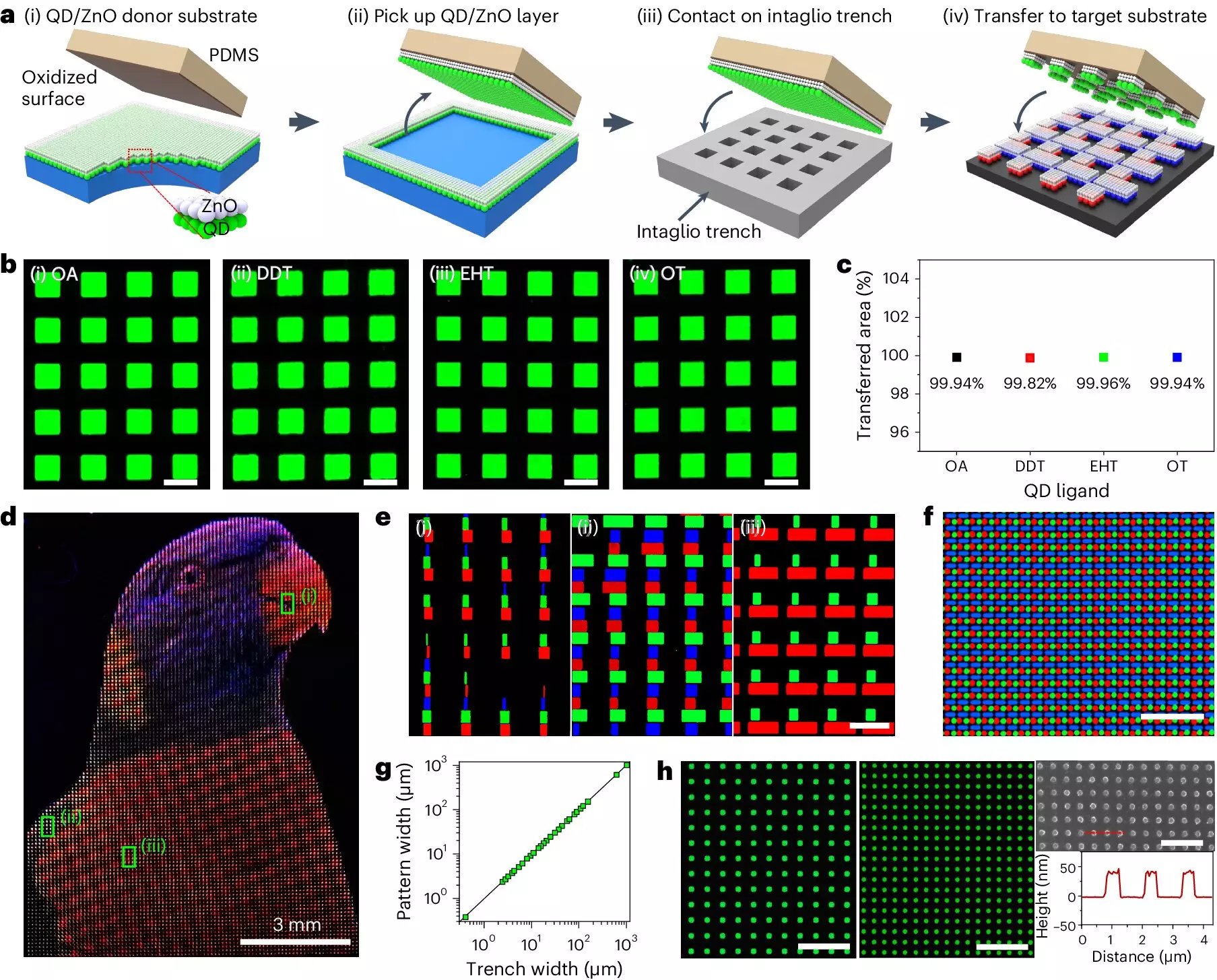In the realm of augmented reality (AR) and virtual reality (VR), the demand for immersive experiences is constantly growing. To meet this demand, a research team has developed a cutting-edge double-layer dry transfer printing technology that revolutionizes the display industry. This breakthrough technology aims to enhance the viewing experience in AR and VR applications by simultaneously transferring light-emitting and electron-transferring layers onto a substrate.
The advancement of wearable, mobile, and Internet of Things (IoT) technologies has led to the proliferation of AR, VR, and wearable displays. However, existing display technologies face challenges in conveying large amounts of information on small screens while maintaining high resolution. Quantum dot nanoparticles have emerged as a promising solution due to their high color purity and reproduction capabilities. Yet, conventional dry transfer printing methods have been limited by low luminescence efficiency.
Led by DGIST Professor Ji-woong Yang, a research team collaborated to develop a double-layer dry transfer printing technology that overcomes the limitations of traditional methods. By reducing interfacial resistance and facilitating electron injection, the new technology generates bright and efficient light-emitting devices. The high-density double-layer thin films exhibit an exceptional external quantum efficiency (EQE) of up to 23.3%. This achievement represents a significant step towards achieving the maximum theoretical efficiency of quantum dot light-emitting devices.
The application of the new technology enables the creation of ultrahigh-definition patterns of quantum dots, reaching up to an impressive 25,526 pixels per inch (PPI). Through repeated printing, the research team confirmed the feasibility of mass production for commercialization purposes. The enhanced resolution screens produced using this technology hold promising implications for the future of VR and AR applications.
Professor Ji-woong Yang expressed optimism about the potential of the double-layer dry transfer printing technology, stating that it has successfully fabricated light-emitting devices with ultrahigh-definition and high efficiency. The achievement of an EQE of up to 23.3% represents a significant milestone in display technology. Professor Moon-kee Choi also emphasized the impact of this research on enabling higher resolution screens in VR and AR applications. Overall, the innovative technology developed by the research team has the potential to revolutionize the display industry and enhance user experiences in AR and VR.

